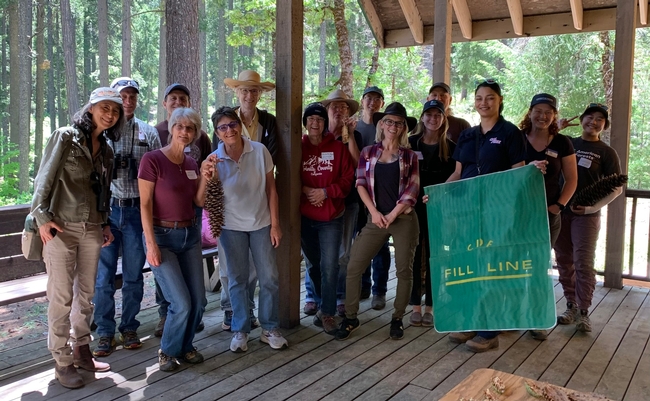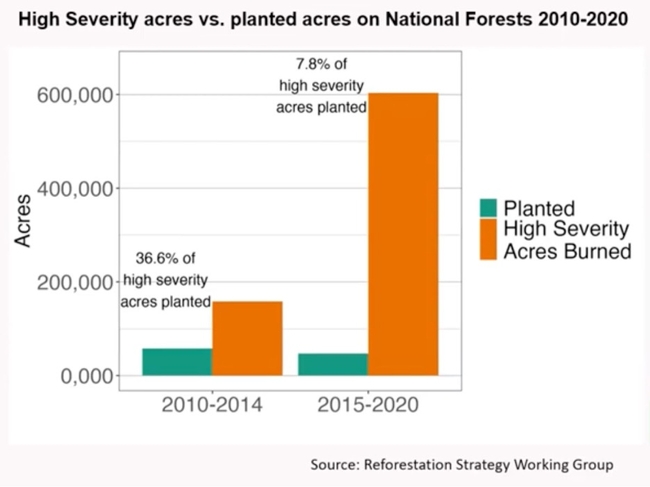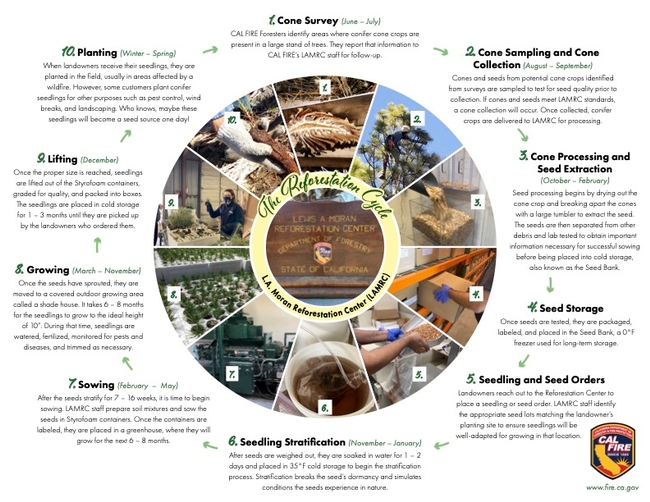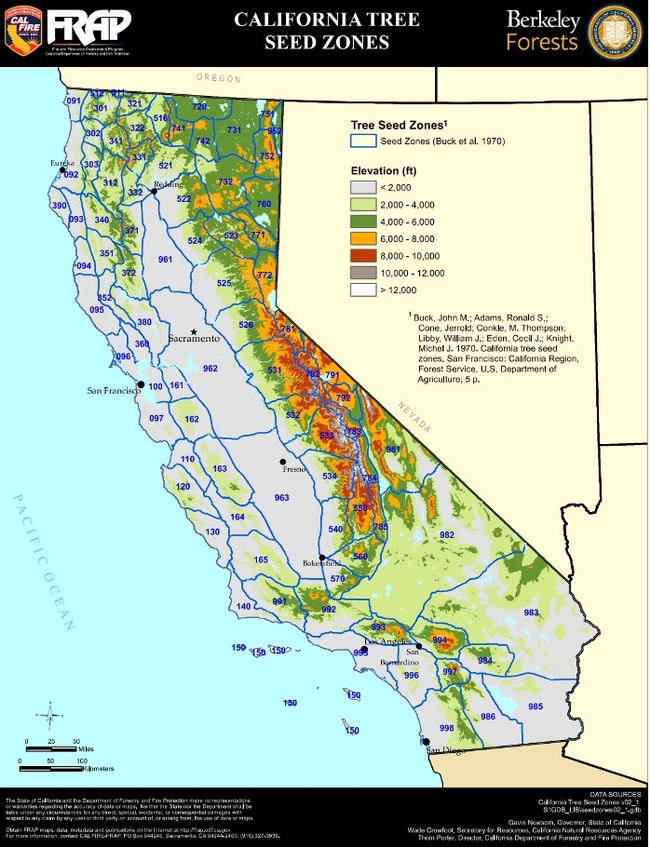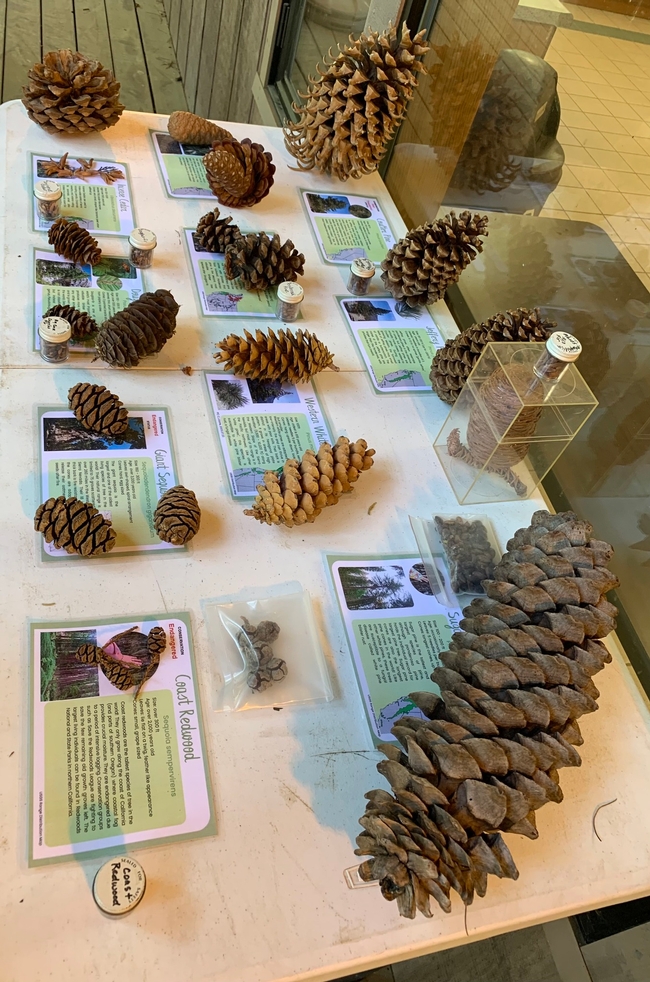Last month, the UC ANR Forest Stewardship program hosted a presentation in collaboration with California American Forests, CALFIRE, and the U.S Forest Service concerning reforestation efforts throughout the state. Below are key takeaways from the May 16th webinar, along with insight into a Cone Collection field day held June 16th.
The webinar began with a presentation from Bridget Mulkerin, California Cone Corps manager for American Forests. American Forests is one part of the Reforestation Pipeline Partnership (RPP), which aims to increase the cone collection workforce and seed bank stock, and improve crew placements across California to optimize collection. Mulkerin expanded upon California's urgent “need for seed” due to a lopsided ratio of forest acres that have been burned by high severity fire, and those that have been reforested (see below).
Mulkerin also emphasized the need for innovation in this statewide effort. While there are alternatives to collecting seeds in the wild, the current system of seed orchards limits the diversity of species. Private forest landowners can collaborate with American Forests to work towards a shared reforestation goal and can help address some of these problems. For instance, Mulkerin shared that the Cone Corps program can help landowners monitor cone crops on their own land and procure seedlings, a mutually beneficial effort. Readers can reference the reforestation cycle graphic below, which details the careful way this effort must be timed.
Denia Troxell, Seed Bank manager at CALFIRE's L.A. Moran Reforestation Center, encouraged landowners to become involved in helping to replenishing CALFIRE's seed bank by providing access to cone bearing trees on their land. To help visualize the number of seedlings CALFIRE needs to meet their goal of reforesting 25% of the state's forests, Troxell recommended thinking about a Home Depot bucket. “One and a half of those buckets equals a bushel, and we need 76,304 of those to reforest only 25% of the state,” she stated.
As noted by Mulkerin earlier, those seeds should also be diverse and come from a variety of forested landscapes. Both Mulkerin and Troxell pointed out that diverse cone species are typically found on private land, which is why the RPP has made it a priority to establish relationships with private landowners. By providing CALFIRE access to cone bearing trees, forest landowners can help achieve that 76,304-bushel goal, and usher in a new generation of diverse seedlings.
Private forest landowners can also learn more about reforestation and forest stewardship through the UC ANR Forest Stewardship Workshop series. The next nine-week series begins July 18th and centers on the Solano/Sacramento region, though anyone anywhere can join. Those who are interested can find more information here.
